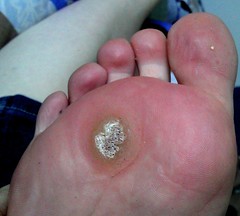Comprehensive Guide to Hyperhidrosis Feet Treatment
Hyperhidrosis is a medical condition characterized by excessive sweating that affects part of the body, such as the head, face, hands, underarms, and feet. This condition can lead to discomfort and embarrassment but, most importantly, can significantly impede one’s quality of life. One of the most commonly affected areas is the feet, leading to a condition known as plantar hyperhidrosis. Despite its prevalence, effective treatment solutions can mitigate its effects. This article will explore the various options for hyperhidrosis feet treatment and will also touch upon the cure for sweaty palms.
Understanding the primary causative factors is the first step towards effective treatment. Hyperhidrosis feet are primarily caused by overactive sweat glands. Factors such as genetics, body physiology, and certain medical conditions can contribute to the overproduction of sweat. This overactivity can also be the explanation for the occurrence of a similar manifestation in hands, leading to the need for a cure for sweaty palms.
Non-Surgical Treatment Options
For many individuals, conservative treatment methods can provide relief from symptoms. These may include:
- Antiperspirants: Using a strong antiperspirant can help block sweat glands. Look for products with high aluminum chloride content, as they are particularly effective.
- Iontophoresis: This process uses water to conduct a mild electrical current through the skin’s surface. It is effective in reducing excessive sweating in hands and feet.
- Medication: Anticholinergic drugs can be used to inhibit sweat production. However, these should be used under medical advice due to potential side effects.
- Botox Injections: Botox can effectively reduce sweating in the treated areas by blocking the nerves that trigger your sweat glands.
Surgical Treatment Options
If non-surgical treatments fail to provide relief, surgical options may be considered. These include:
- Lumbar Sympathectomy: This surgery involves cutting or interrupting part of the sympathetic nerve trunk. This limits the nerve signals causing excessive sweating.
- Endoscopic Thoracic Sympathectomy (ETS): Although more commonly used as a cure for sweaty palms, ETS can also be effective for severe plantar hyperhidrosis.
However, both these surgical options should be considered as last resort treatments due to potential serious side effects, including compensatory sweating (increased sweating in other areas of the body).
It is essential that individuals suffering from hyperhidrosis of the feet seek professional medical advice to tailor the most effective treatment plan for their specific needs. Personalized management is crucial in dealing with this often distressing condition. While the focus of this article has been predominantly on hyperhidrosis feet, it’s essential to remember that in many cases, there is a need for a cure for sweaty palms as these two conditions often occur in conjunction.
Overall, while hyperhidrosis feet can be a debilitating condition, it’s crucial to understand that effective treatments are available. By choosing the most suitable approach in consultation with a healthcare provider, one can manage the symptoms and maintain a good quality of life.


